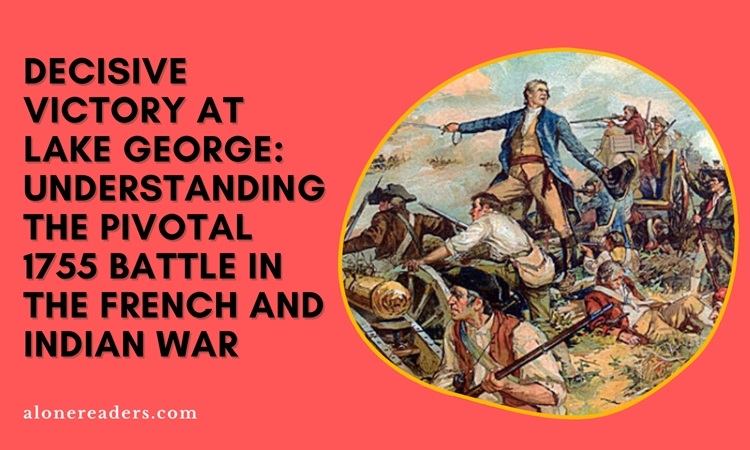
The Battle of Lake George, fought on September 8, 1755, in the northern reaches of the Province of New York, stands as a significant engagement in the broader context of the French and Indian War. This battle, emblematic of the struggle for dominance in North America, pitted British colonial forces, aided by Iroquois warriors, against the French and their Native American allies. The conflict not only highlighted the complexities of colonial warfare but also had enduring consequences on the geopolitical landscape of the continent.
Background of the French and Indian War
The French and Indian War (1754-1763), part of the larger Seven Years' War, was a monumental conflict that saw the major European powers, primarily Britain and France, vying for control of the North American territories. The battle at Lake George was a pivotal episode in this protracted struggle.
Strategic Importance of Lake George
Located in the Province of New York, Lake George was a critical waterway, offering a strategic pathway for military movements. Control over this area was essential for either side to maintain supremacy in the region.
Leadership and Armies
The French forces, commanded by General Jean-Armand, Baron de Dieskau, comprised a mix of regular troops, Canadian militiamen, and Native American allies. Opposing them were British colonial irregulars and a contingent of Iroquois warriors. This force was led by William Johnson, with notable participation from the Iroquois leader Hendrick Theyanoguin.
The Alliance with the Iroquois
The involvement of the Iroquois, particularly under the leadership of Hendrick Theyanoguin, was a critical factor in the British strategy. Their knowledge of the terrain and guerrilla warfare tactics gave the British a significant advantage.
The Three Phases of Combat
The battle unfolded in three distinct phases, each marked by intense combat and strategic maneuvering. The initial encounter, the subsequent skirmishes, and the final confrontation collectively determined the outcome of the battle.
Tactics and Warfare
Both sides employed a combination of traditional European military tactics and irregular warfare, characteristic of the North American frontier. This blend of styles made the battle particularly brutal and unpredictable.
The British Victory
The British and their allies emerged victorious, marking a significant turning point in the campaign to expel the French from North America. This victory was not just a tactical achievement but also a moral booster for the British and colonial forces.
Construction of Fort William Henry
In the wake of the battle, William Johnson commissioned the construction of Fort William Henry to consolidate the British gains and secure the area around Lake George. This fortification would play a crucial role in the subsequent military operations in the region.
Impact on the French and Indian War
The Battle of Lake George was more than a military victory; it altered the course of the French and Indian War. It demonstrated the effectiveness of colonial forces when combined with Native American allies and underscored the strategic importance of alliances and territorial control.
Influence on American Colonial History
The battle had lasting implications for the development of American colonial history. It exemplified the complex dynamics between European powers, colonial settlers, and Native American tribes, setting the stage for future conflicts and the eventual shaping of the United States.
The Battle of Lake George is a testament to the turbulent and transformative period of the mid-18th century in North America. It reflects the intricate web of alliances, strategies, and ambitions that defined the era. As we delve into this historical event, we gain a deeper understanding of the forces that shaped the continent's destiny.